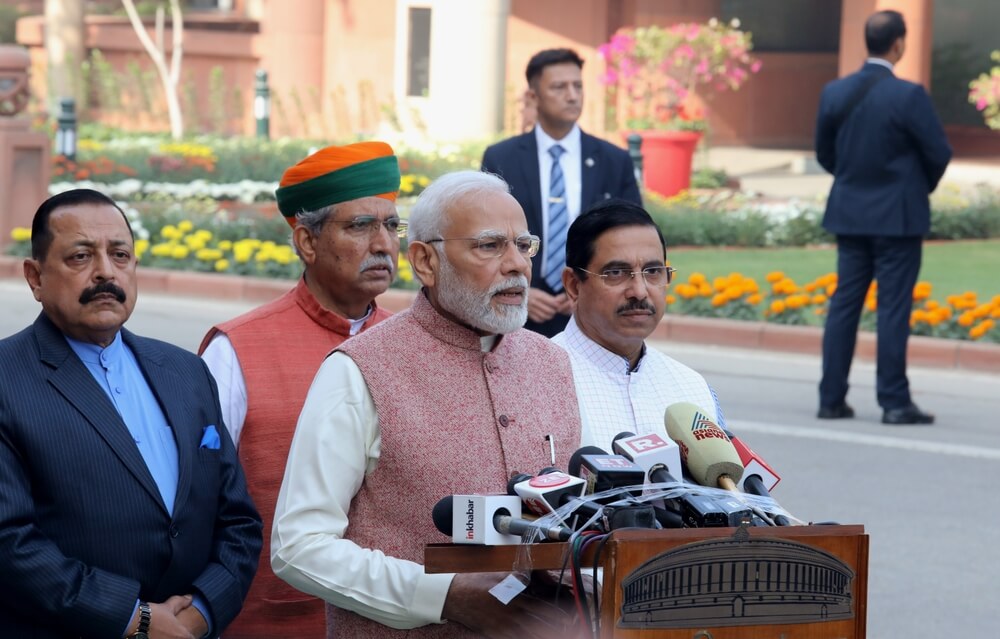India will remain the leading global offshore destination for international IT companies in the forthcoming year. This is primarily because the entire economy is resilient to shocks in the global market.
The IT sector will also be a significant beneficiary of the large migration of investments from China to other developing economies, among which India is a leader.
The growth trend of European and US investments in India has been rapid in the last 2 years (about 400%) and is 3 times higher than investments in China, which decreased to about $20 billion last year from a record $120 billion in 2018.
India's economy has shown resilience to global disruptions. It was not affected by shocks in the energy and food markets and crises in supply chains to the extent that most other developing economies were.
According to the IMF's last October estimates, growth will remain high and stable, between 6 and 7%, twice the global average. The principal parameters give India reasons to expect further growth in its IT sector, particularly as the largest outsourcing destination for global technology giants.
Employment and consumption growth
After a period of stagnation due to reduced demand, the IT services sector in India has been experiencing employment growth of 5-6%. This is consistent with projections indicating a rise in demand for IT services in the US market by 2024.
Employment in India's IT sector has also increased due to expected growth in domestic IT spending.
Spending in the Indian IT sector will reach about $125 billion next year (according to Gartner). This represents a growth of almost 11% compared to 2023, when stagnation was recorded. This increase in spending will be fuelled by investments in software and device production and, above all, in IT services, which will increase by around 15%.
The IT-BPM (Business Process Management) sector accounts for about 7.5% of India's GDP and generates an income of about $230 billion (2022).
But expectations from this sector are much higher. The Government of India has outlined a plan for a much higher share of digital technology in the domestic economy, up to 20-25% by 2025-2026.
 Narendra Modi's government will increase benefits and concessions to the domestic economy, including the IT sector, before the elections, which will benefit the industry
Narendra Modi's government will increase benefits and concessions to the domestic economy, including the IT sector, before the elections, which will benefit the industry
The goal is that the digital industry sector not only follows the expected high growth of the entire economy but also participates in the projected GDP of around $5 trillion in 2 years with 20%, that is, with $1 trillion.
The current growth rates in the IT sector of about 7.5% per year fit into these plans and make them sustainable, following expectations that there will be no significant disruptions in the meantime.
One of the drivers for the further growth of the IT sector is the accelerated expansion of the Internet coverage programme (Digital India) from the current 830 million Indians to 1.2 billion people who will have access to the Internet by 2025.
The reorientation of Indian industry towards more contemporary technology, such as artificial intelligence (AI), cloud computing, and the Internet of Things, whose broader implementation is facilitated and overseen by numerous government projects, also contributes to the growth of the digital sector.
India remains a location with the significant resource of a skilled workforce, which has so far been an asset in attracting business and investment. Along with the expected growth in demand for digital technologies and services, its IT sector expects stable growth in the future.
Political turbulence could dampen optimism
One factor that may dampen India's optimism to some extent is the political turbulence surrounding the general elections next April or May.
Prime Minister Narendra Modi's government will increase benefits and concessions to the domestic economy, including the IT sector, before the elections, which will benefit the industry.
Any assessment of the performance of the Indian economy for the second half of the year and beyond will depend on the election results
However, any assessment of the performance of the Indian economy for the second half of the year and beyond will depend on the election results. If Modi's Bharatiya Janata Party (BJP) retains the majority, this will also mean a stable economic environment and, thus, a more stable period for the IT sector.
Political turbulence before and immediately after the elections could make India less attractive for investments. A weak coalition government after the elections, requiring time to consolidate and keep the economy on the path of stable growth, would cause a similar effect.
Pre-election surveys and the last November elections in 5 Indian states confirmed that the BJP has a pole position ahead of the spring general elections. Prime Minister Modi's high approval rating of more than 70% also strongly contributes to its good prospects.